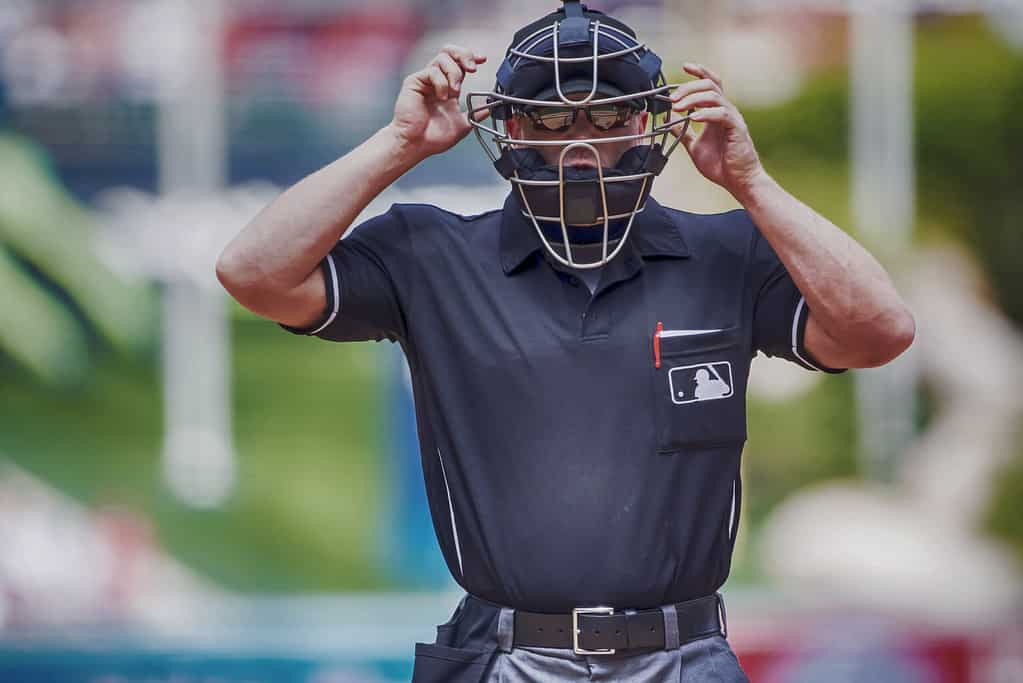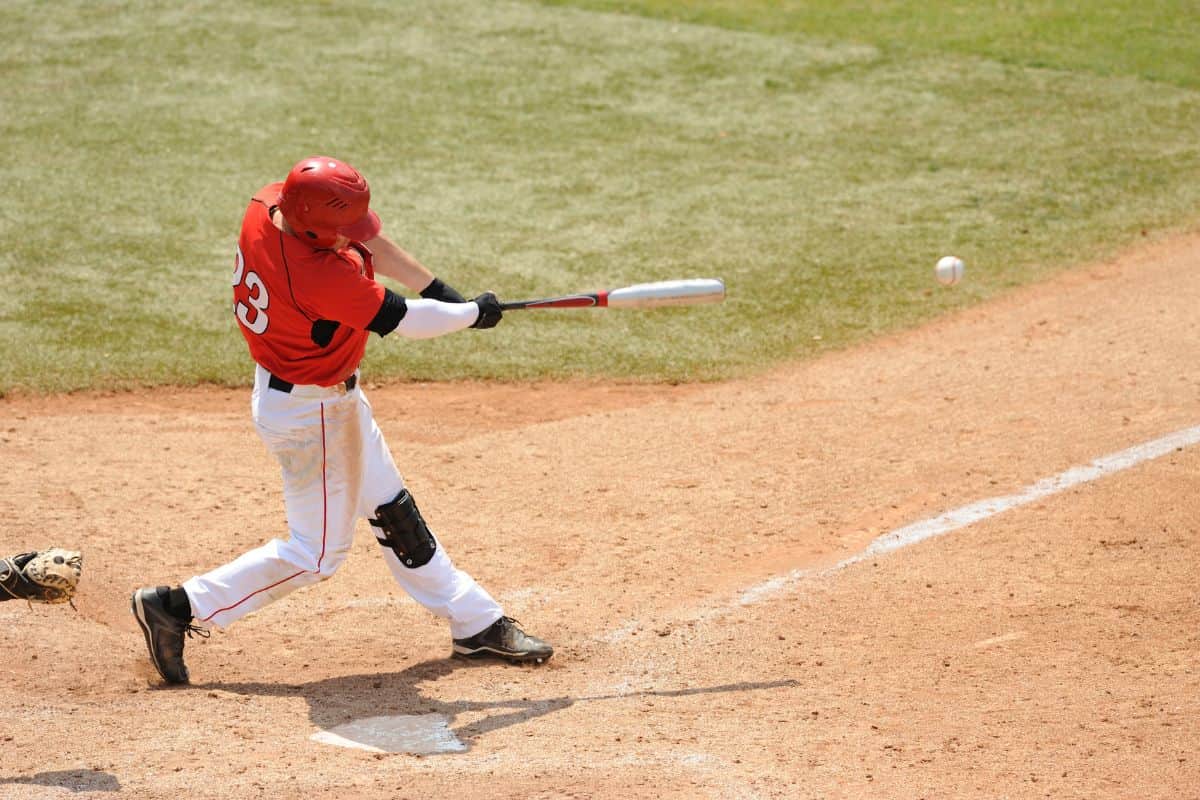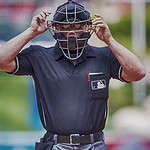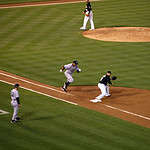A balk is a term used in baseball to describe an illegal motion made by a pitcher. When a pitcher makes a movement that is not allowed by the rules, it is considered a balk. This results in the umpire awarding a base or bases to the opposing team.
There are several actions that can be considered a balk. One common example is when a pitcher makes a motion to throw to a base, but then decides to throw to the plate instead. If the pitcher does not completely step off the rubber before making the throw, it is considered a balk. Other examples of a balk include making a motion to the plate without delivering the ball, or faking a throw to first base with a runner on base without actually throwing the ball. Understanding what constitutes a balk is important for both pitchers and umpires in order to avoid penalties and keep the game fair.

What is a Balk?
Definition
In baseball, a balk is an illegal motion by a pitcher that can result in the advancement of a runner or runners on base. The balk rule is designed to prevent pitchers from deceiving baserunners and gaining an unfair advantage. A balk can occur when a pitcher makes a motion to deliver the ball to home plate but does not complete the delivery or when a pitcher makes an illegal motion with runners on base.
History
The balk rule has been a part of baseball since 1898, when it was first introduced to prevent pitchers from using deceptive motions to pick off baserunners. Over the years, the rule has been refined and expanded to cover a wide range of illegal pitching motions. Today, the balk rule is an important part of the game, and pitchers must be careful to avoid making illegal motions that could result in a balk.
Some common types of illegal pitching motions that can result in a balk include:
- Faking a throw to first base.
- Making a motion to pitch but then stopping and not delivering the ball.
- Making a motion to pitch but then throwing to an unoccupied base.
- Making a motion to pitch but then dropping the ball.
- Making a motion to pitch but then stepping off the rubber without throwing the ball.
Pitchers who commit a balk are usually charged with a ball, and any runners on base are allowed to advance one base. In some cases, a balk can result in the award of a run to the opposing team.
In conclusion, a balk is an illegal motion by a pitcher that can result in the advancement of runners on base. The balk rule has been a part of baseball since 1898 and has been refined over the years to cover a wide range of illegal pitching motions. Pitchers must be careful to avoid making illegal motions that could result in a balk and give the opposing team an unfair advantage.
Balk Rules and Regulations
Pitching Motion
A balk is an illegal motion by the pitcher that deceives the base runner. There are several ways a pitcher can commit a balk, including:
- Making any motion to pitch while not in contact with the rubber
- Failing to step directly toward a base before throwing to that base
- Throwing or feinting a throw to an unoccupied base
- Failing to come to a stop before making a pitch
- Making a quick return pitch
- Pitching from the set position without coming to a complete stop
Pitching Position
The pitcher must be on the rubber and in contact with it when he delivers the pitch. He must also have his pivot foot in contact with the rubber and his other foot in front of the rubber.
Illegal Motions
The following are some examples of illegal pitching motions:
- Stepping toward first base with the pivot foot and not throwing to first base
- Throwing or feinting a throw to an unoccupied base when there is no runner on that base
- Faking a throw to third base and not throwing to third base
- Making any motion that is not part of the legal pitching delivery
If a balk is called, the ball is dead, and all runners advance one base. If the pitcher commits a second balk in the same inning, the umpire can award an additional base to any runners who were on base at the time of the second balk.
In Major League Baseball, left-handed pitchers are required to step toward first base when throwing to that base, while right-handed pitchers are required to step toward third base. This is known as the “Steve Carlton Rule,” named after the Hall of Fame left-handed pitcher.
Overall, it is important for pitchers to understand the rules and regulations surrounding balks in order to avoid committing this illegal pitch.

Penalties for a Balk
Types of Penalties
When a pitcher commits a balk, the umpire will signal the violation by calling “Balk!” and making a sweeping motion with their arms. The umpire will then award any runners on base an extra base. Additionally, if the pitch is thrown, it will be considered a “dead ball,” and play will stop.
There are several types of penalties that can be assessed for a balk, depending on the circumstances. These include:
- Advancing runners: As mentioned, any runners on base will be awarded an extra base.
- Ball to the batter: If the pitcher throws the ball after committing a balk, it will be considered a “dead ball,” and the batter will be awarded a ball.
- Ejection: If the pitcher argues with the umpire or continues to balk after being warned, they may be ejected from the game.
Effect on Runners
When a balk is committed, any runners on base will be awarded an extra base. This can have a significant impact on the game, as it can change the outcome of a play or even the entire game. For example, if a runner is on first base and the pitcher commits a balk, the runner will be awarded second base. This can put them in a scoring position and increase the chances of them scoring a run.
Effect on Hitters
If the pitcher throws the ball after committing a balk, it will be considered a “dead ball,” and the batter will be awarded a ball. This can be beneficial to the hitter, as it can give them an advantage in the count. Additionally, if the pitcher is rattled by committing a balk, they may be more likely to make a mistake on the next pitch, which could result in a hit or an error.
In conclusion, a balk can have significant penalties for both runners and hitters. It is important for pitchers to be aware of the rules surrounding balks and to avoid committing them whenever possible.
Famous Balks and Controversies
Steve Carlton’s Balk
In 1982, Steve Carlton, a pitcher for the Philadelphia Phillies, was called for a controversial balk during a game against the Montreal Expos. The balk was called by the third base umpire, who ruled that Carlton had made an illegal motion while on the mound. Carlton and his team highly disputed the call, and it ultimately led to the Phillies losing the game.
Hidden Ball Trick
The hidden ball trick is a play in baseball where a fielder pretends to throw the ball back to the pitcher but instead keeps the ball hidden in their glove. If the runner on base is not paying attention, the fielder can tag them out. In 2013, during a game between the Los Angeles Angels and the Houston Astros, Astros pitcher Wesley Wright was called for a balk after attempting the hidden ball trick. The umpires ruled that Wright had made an illegal motion while on the mound, and the runner on base was awarded an extra base.
Congressional Involvement
In 2013, lawmakers in Congress proposed a bill that would require the Commissioner of Baseball to study the prevalence of balks in the game. The bill was met with controversy, with some arguing that it was a waste of time and resources. Others argued that balks were an important part of the game, and that the bill was necessary to ensure that the rules were being enforced properly.
Overall, balks are a controversial and often misunderstood part of baseball. While they can be frustrating for players and fans alike, they are an important part of the game and are designed to prevent unfair advantages on the field. Whether it’s a high-profile occurrence like Steve Carlton’s balk or a more subtle play like the hidden ball trick, balks will continue to be a topic of discussion in the world of baseball.
Conclusion
In conclusion, a balk is a violation of the rules in baseball that occurs when a pitcher makes an illegal motion or movement before delivering the ball to the batter. The purpose of the balk rule is to prevent pitchers from deceiving or confusing runners on base.
There are several situations that can result in a balk, such as when a pitcher makes a quick or erratic movement, fails to come to a complete stop before delivering the ball, or throws to a base without stepping off the pitching rubber.
It is important to note that while a balk results in a dead ball and runners advancing one base, it does not result in a pitch being thrown. Therefore, a batter cannot swing at a pitch that is called a balk.
Umpires are responsible for determining whether a balk has occurred and making the appropriate call. It is up to the pitcher to be aware of the rules and avoid making any illegal movements.
Overall, understanding the balk rule is an important aspect of baseball for both players and fans. It is a rule that can greatly impact the outcome of a game and is essential for fair play and sportsmanship.
- UCLA Softball: Let’s Go Bruins! - February 12, 2024
- Youth Softball Helmet Buying Guide: Keep ‘Em Safe - February 12, 2024
- Youth Softball Pants: Our Top Picks for Your Top Player - February 12, 2024








